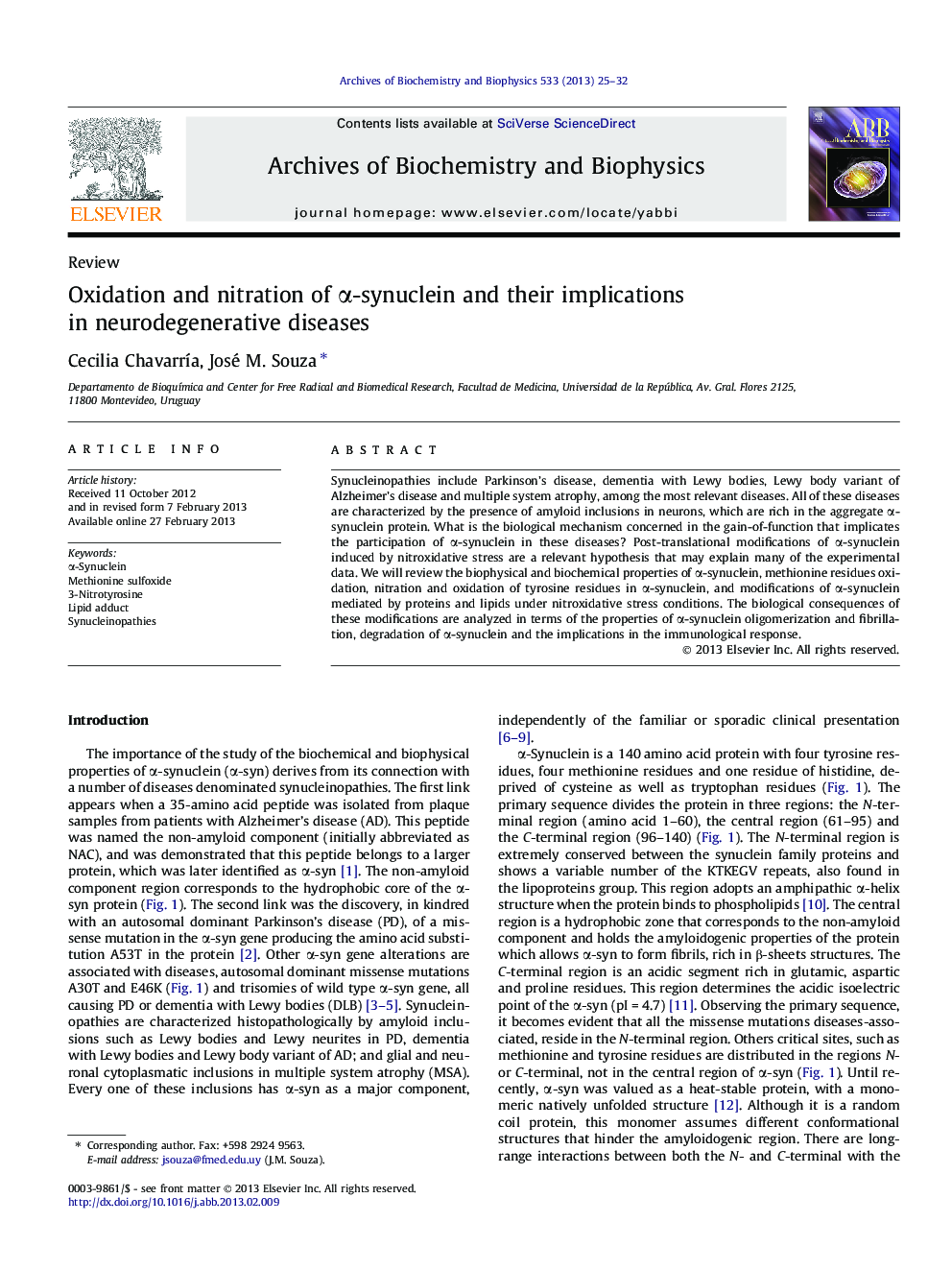| Article ID | Journal | Published Year | Pages | File Type |
|---|---|---|---|---|
| 1925351 | Archives of Biochemistry and Biophysics | 2013 | 8 Pages |
Synucleinopathies include Parkinson’s disease, dementia with Lewy bodies, Lewy body variant of Alzheimer’s disease and multiple system atrophy, among the most relevant diseases. All of these diseases are characterized by the presence of amyloid inclusions in neurons, which are rich in the aggregate α-synuclein protein. What is the biological mechanism concerned in the gain-of-function that implicates the participation of α-synuclein in these diseases? Post-translational modifications of α-synuclein induced by nitroxidative stress are a relevant hypothesis that may explain many of the experimental data. We will review the biophysical and biochemical properties of α-synuclein, methionine residues oxidation, nitration and oxidation of tyrosine residues in α-synuclein, and modifications of α-synuclein mediated by proteins and lipids under nitroxidative stress conditions. The biological consequences of these modifications are analyzed in terms of the properties of α-synuclein oligomerization and fibrillation, degradation of α-synuclein and the implications in the immunological response.
• Synucleinopathies are characterized by α-syn amyloid inclusions. • Nitration and oxidation of α-syn has important biological consequences. • Nitrated α-syn activates an immunological response inducing microglia activation.
